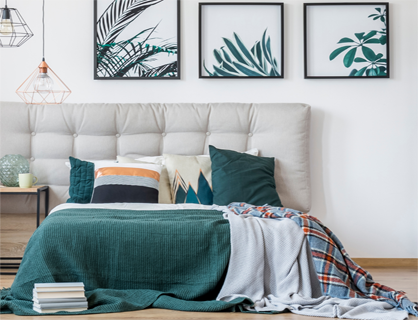
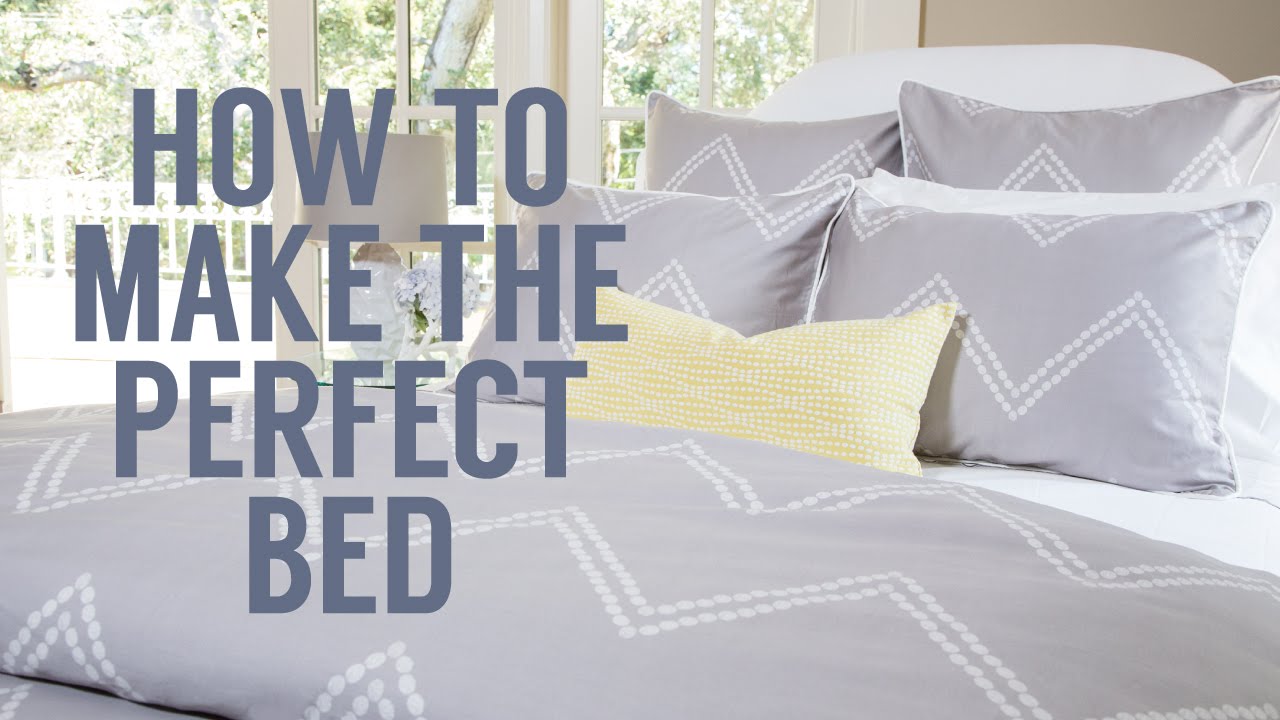
1. Everything you need to know about bed sheets
Bedding consists of a set of sheets, pillowcases and a duvet. As a general rule, your sheets and pillowcases should match. However, sheets are not just sheets, if you get what we mean… There are two different types of sheets. Also, these different blades can be made from a variety of materials. Finally, the material can be woven in a variety of ways to create sheets that look and age distinctly. That’s a lot, isn’t it? Don’t worry, we’ve got it for you:
2. Types of Sheets
There are two types of sheets – flat sheets and fitted sheets. Fitted sheets have an elastic band around the edge so they hold on to your mattress. Whereas the flat sheet is flat and rectangular with no elastic at the edge of the sheet.
3. Types of materials
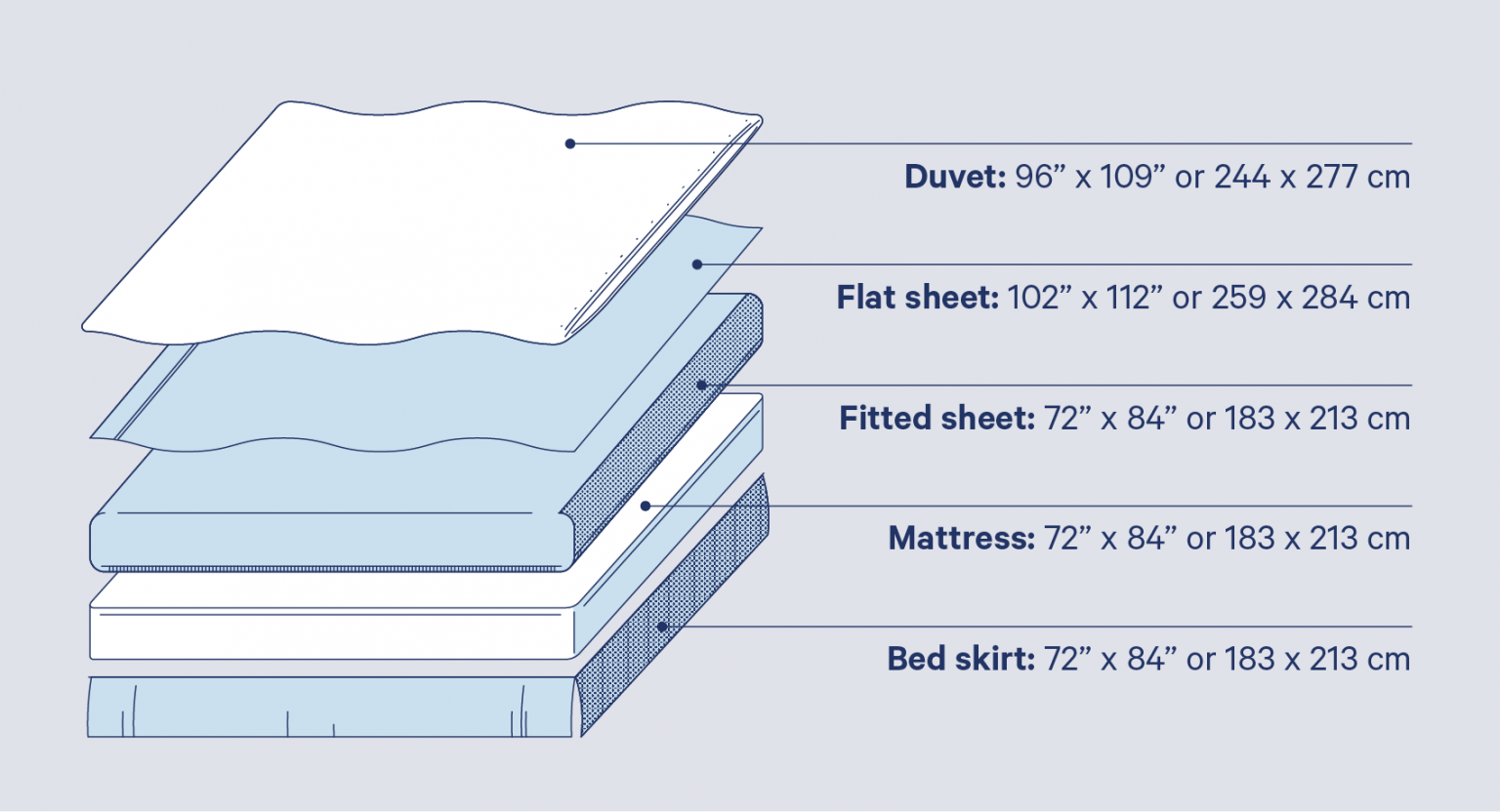
The most common fabrics used to make sheets are Bamboo fibers, Cotton, Synthetic fibers.
There are a few things to consider when looking at the weave of a bed sheet. First the thread count, in other words this is the number of threads per square inch of sheet. Second is the type of fabric. There are two types of fabrics, namely Percale (durable and cheap) and Satin (luxurious and slightly more expensive).
4. What is a flat bed sheet and how to use them?
Flat bed sheets or top sheets are rectangular and do not have elastic corners like fitted sheets. This makes it easier to fold and store away.
The most common use of the flat sheet is to create an extra layer between the bottom sheet covering the mattress and the comforter or duvet. This serves a dual purpose. First, it keeps the duvet/quilt clean because it absorbs the bodily material that you lose while sleeping. And second, the top sheet adds a layer of warmth and luxury for a more restful night’s sleep. If you are using it as a cover sheet, you should place the sheet face down so that the top of the sheet is facing up when you fold the covers back.
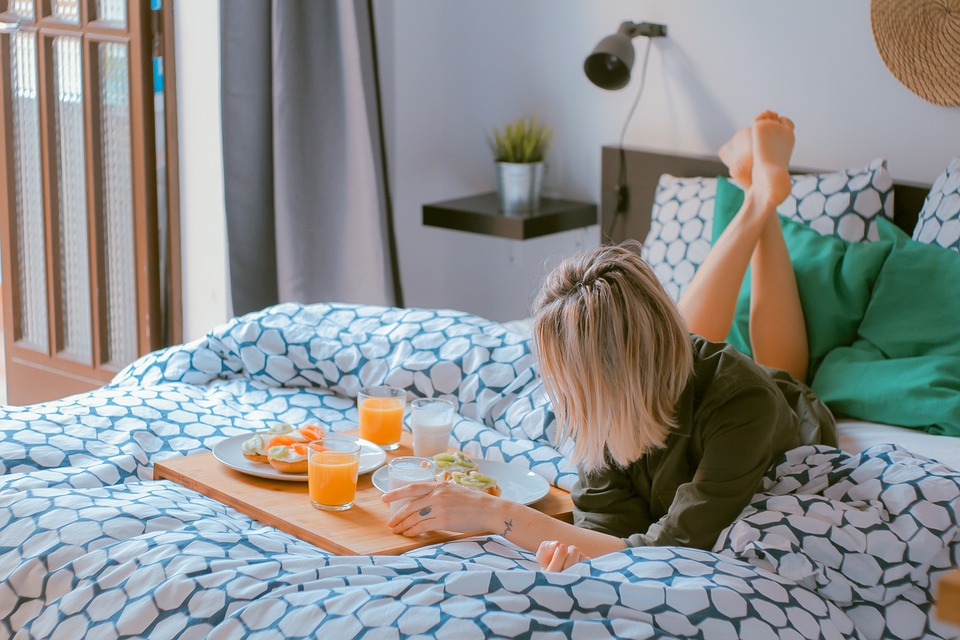
In most cases yes. You can place the sheet between you and the comforter/duvet for extra warmth. Or if it’s a hot night, you can remove the duvet and just sleep under the sheet.
5. How do you choose the right sheets for your bed?
- Make sure you get the right size. If the sheet is smaller than the mattress, it won’t stay in place while you sleep. To avoid this, make sure you know your mattress size before buying new bedding, and then get the sheets that match.
- Choose the right fabric and weave. If you want something durable, buy a 300-count linen and percale fabric. For soft luxury, shop for Egyptian cotton or silk with satin fabric.
6. Do You Have to Use a Flat Sheet?
There are two schools of thought. The ones for the flat sheet and the ones against it.
Easy care: Washing, ironing and folding bed sheets are easy. It’s easier to wash a bed sheet than a set of duvet covers. You can wash your sheets every week but washing a comforter every week is a mission! Also folding a sheet with an elastic band can be challenging while folding a flat sheet is very easy.
Luxury feel: Having a soft, silky sheet against your skin is far better than a rough blanket irritating you while you sleep.
Temperature regulation: Having several layers of bedding on your bed makes it easier for you to regulate your body temperature during the night. If you only sleep under a duvet and it gets too hot, chances are you’ll freeze when you take it off. However, if you have a sheet under the duvet, you can remove the duvet and still have a layer of protection against the weather.
7. How to make a bed with a flat bedsheet
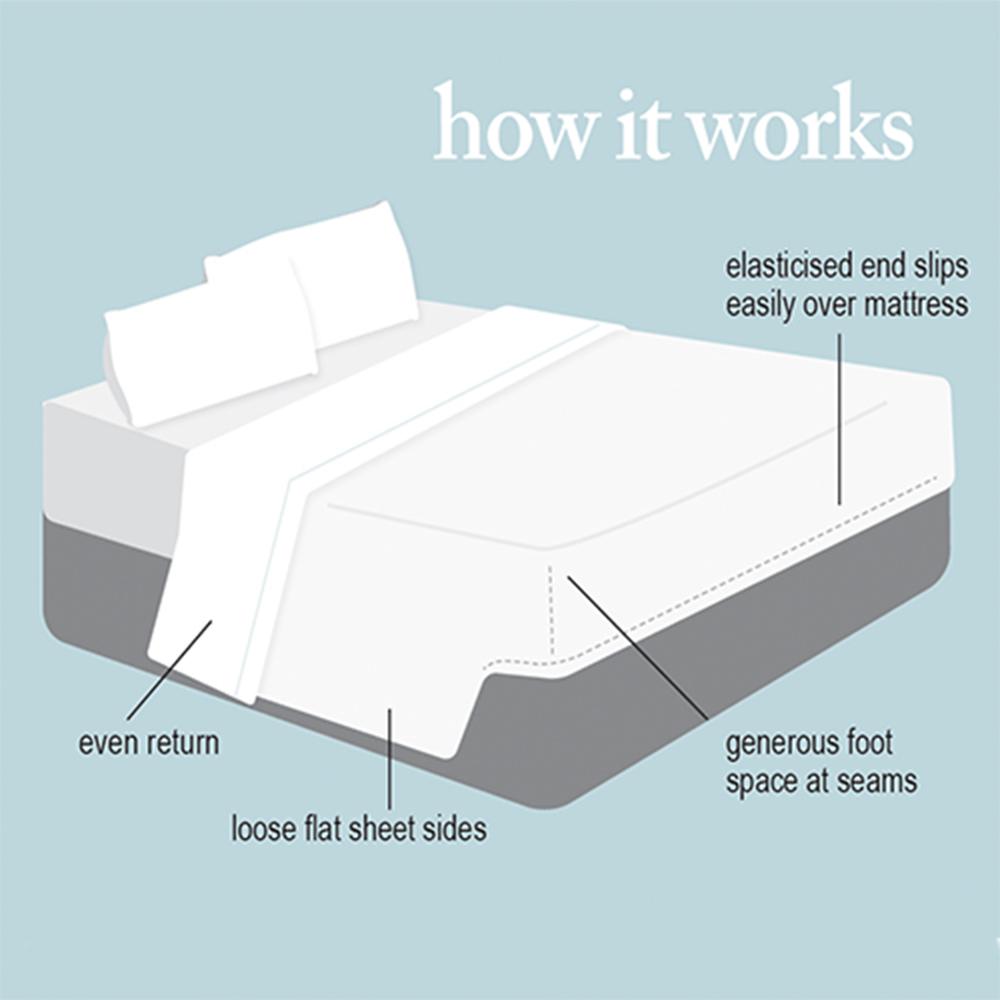
Flat sheets are typically used as a layer with face down between the bottom sheet and the duvet or a quilt. But you can also use flat sheets instead of elastic sheets. We’ve divided our step-by-step guide into two sections. First we explain in detail how to use a flat bed sheet as a bottom sheet, and then we explain how to make your bed as a whole.
8. How to use a bed sheet instead of a fitted sheet
1. Move the bed away from the wall so you have enough space to move around the bed easily.
2. Lay the sheet flat over the mattress, making sure the hanging sides on opposite sides of the mattress are equal in length (head and foot must be equal in length, right and left sides must be equal in length).
3. Fold and tuck the top/head and bottom/foot of the sheet in place. The sides must not be bent for the next step.
4. Start at the bottom left corner of the bed and stand on the side of the bed facing the mattress.
- With your hands shoulder-width apart, grasp the bottom corner of the opened sheet with both hands and gently pull it towards your body. The loose part of the sheet should now stretch horizontally towards you. The sheet should be flush with the top edge of the mattress. Make sure your bottom hand is level with the foot end of the bed and your other hand is shoulder-width apart over the mattress.
- Holding the sheet taut, run your bottom hand diagonally down and across your body until the mattress meets the bottom of the bed.
- Keep your bottom hand still where the mattress and base meet. Holding the sheet taut, move your other hand toward the ceiling so the sheet extends up (toward the ceiling) in a triangle.
- Keeping it taut, fold the triangle over the mattress and leave it there. You can release the top of the triangle for the next step, but keep your bottom hand steady.
- Using both hands, tuck the bottom corner of the sheet (which you hold with your bottom hand) under the mattress.
- Now take the tip of the triangle and gently pull it towards your body.
- Pull the tip of the triangle down toward the floor and place firmly under the mattress.
5. Repeat step 4 for all corners. Remember to stand by the bed and face the mattress as you repeat these steps.
9. How to make a bed with a fitted sheet and top sheet
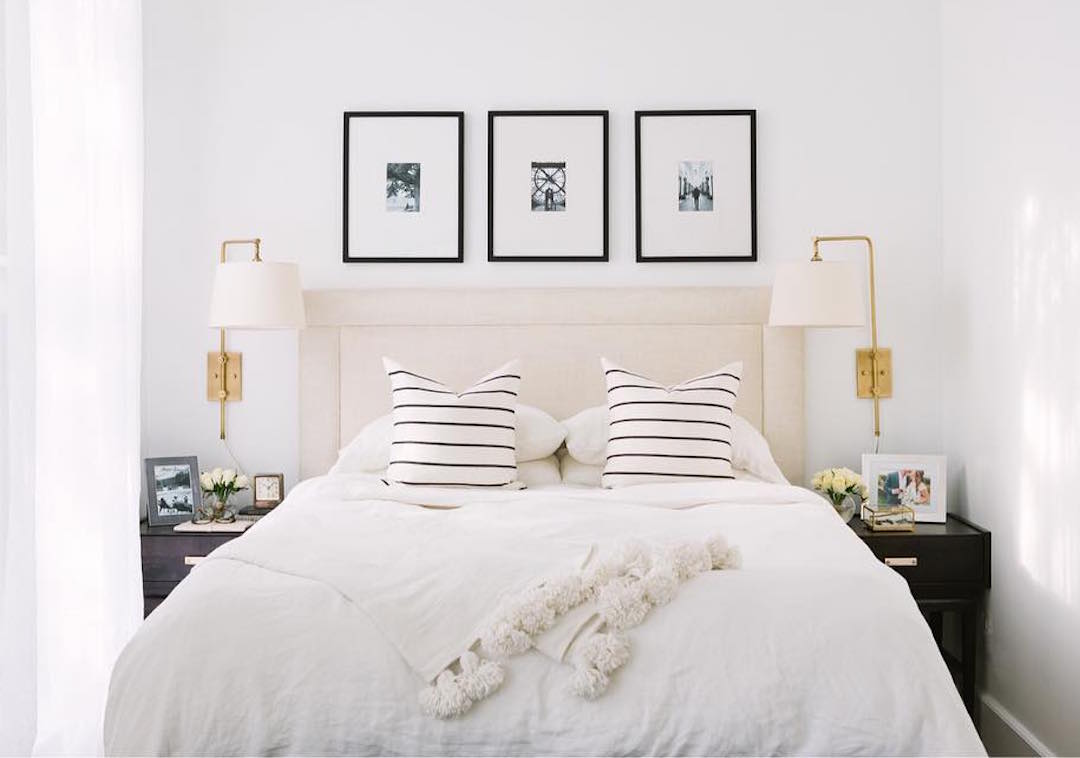
If you’re using a flat sheet, go back to the steps above to see how to lay the foundation for your bedding set.
- Lay the sheet over the mattress, making sure the elastic corners line up with the bottom corners of the mattress.
- Place the top sheet on the bed face down. Make sure the top of the sheet is flush with the top of the mattress (at the head of the bed) and the hanging sides are about the same length.
- Spread the blanket over the top sheet. The top or head of the blanket should be level, but about 40cm below the top edge of the sheet.
- At the head of the mattress, fold over the 40cm of top sheet not covered by the comforter. Notice that the visible piece of the top sheet is now facing up.
- Starting at the foot of the bed, neatly fold the comforter and top sheet into one layer. Ensure this layer is snug at the foot of the bed.
- Spread out your comforter or throw it over the covers so the top of the comforter lines up with the top of the back sheet of the binder.
- Start with the pillow you sleep on and stack your pillows in the 40cm space between the head of the bed and the top of the duvet.
This is how you can make a bed with a flat sheet with or without elastic sheet.



